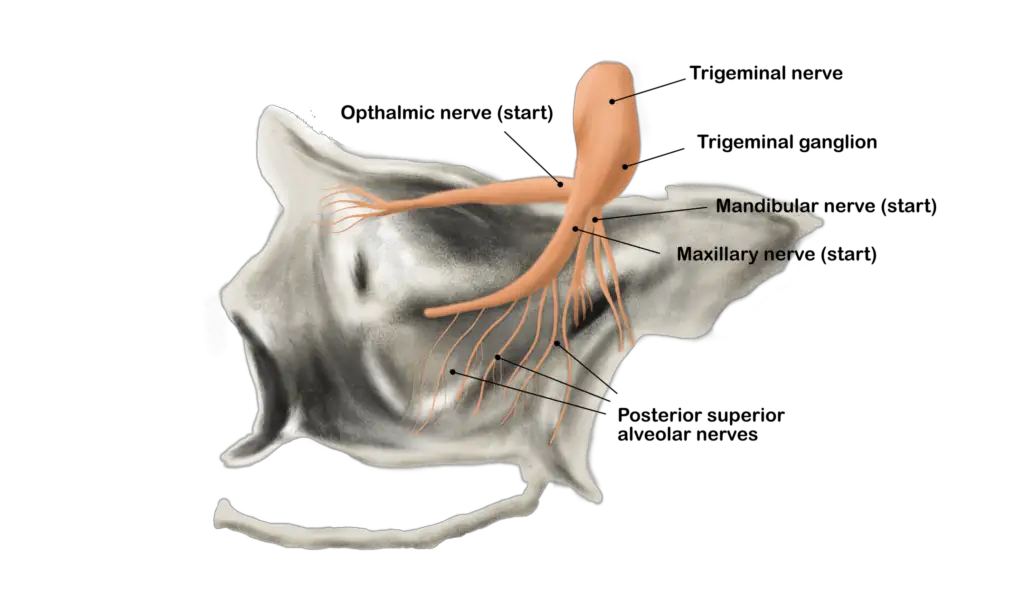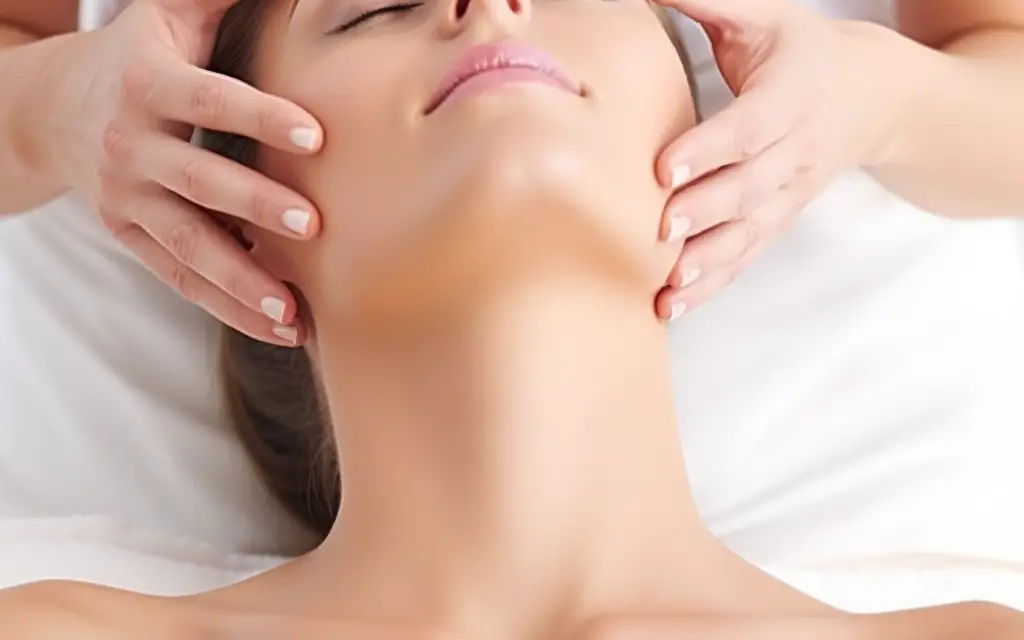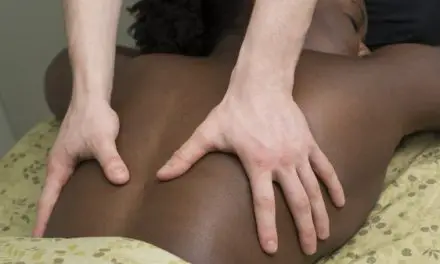Imagine waking up to a throbbing headache that doesn’t seem to go away. You try to eat your breakfast, but as you start to chew, a sharp pain shoots up your jaw. As the pain subsides, your jaw feels tight and overworked with an ominous clicking noise every time you move it. Leaving the feeling as if your jaw is locked up.
Back pain and neck pain are common side effects of a migraine attack, but jaw pain can also trigger it. Temporomandibular joint disorder (TMJ or TMJD) affects the joints of the jaw and its corresponding muscles and nerves. A migraine is not believed to stem from disorders such as these, but evidence suggests that they are a factor.
Is a migraine a type of headache?
Despite their similarities, a migraine and a headache have different symptoms that may require different treatments. A headache is usually a dull, persistent ache that spreads across your head, whereas migraines are intense pulsing or throbbing pain on one side of your head. Some people may also experience an achy low back pain with their migraine.
A migraine is often characterized by severe throbbing pain on one side of the head. This intense pain is often accompanied by symptoms like nausea, vomiting, jaw clicking, sensitivity to light and sound, blurred vision, and vertigo. A migraine is often more severe than typical headaches, lasting for hours or even days at a time.
The four phases of a migraine are:
- Premonitory phase: occurs before the migraine attack begins and may include changes in mood, food cravings, or neck stiffness
- Aura phase: visual disturbances like flashes of light or blind spots
- Headache: the familiar throbbing or pounding sensation
- Postdrome: follows after the end of a migraine, leaving you feeling drained and washed out
How does the jaw cause migraines?
There is a high correlation between TMJ disorder and migraine headaches. The improper jaw movement and muscle tension in the face and neck, which can put pressure on the trigeminal nerve, leading to severe pain.
The trigeminal nerve is to the head what the sciatic nerve is to the leg. It is the primary trunk to the tree that branches out into every individual nerve ending in the face, such as the maxilla, ophthalmic, and mandibular nerve. Thus, pain, tension, and/or misalignment in the TMJ can contribute to a migraine.

The trigeminal nerve is one of the major innervations that can contribute to a migraine. Symptoms can exhibit on one side of the head, jaw, or above the eyes. (Image by Nick Ng.)
What should you do if you think your jaw is causing your migraines?
A qualified health professional, like a dentist or an otolaryngologist (a doctor that specializes in throat, nose, and ear disorders, may conduct a physical examination of your jaw area, review your medical history, and possibly request imaging tests, such as X-rays or MRI scans.
Jaw pain (along with many other chronic conditions) is often indirectly worsened by stress. Everyone holds their stress differently, and for some, this results in the clenching of the jaw, over straining the muscles. Stress-management techniques, such as meditation or yoga, may help reduce muscle tension which in turn may help reduce the frequency and intensity of a migraine.
Other than lifestyle changes, treatment options may include physical therapy, mouth guards, and medications in order to relieve pain. In severe cases, surgery may be necessary to correct any underlying issues with the jaw joint or muscles that are causing pain.
If you think that your jaw is contributing to your migraines, get medical attention from a healthcare professional. A doctor or dentist may be able to diagnose TMJ disorder and recommend the best treatment options for you.
[Further exploration: Does Ehlers-Danlos Syndrome Cause Migraine Attacks?]
What works for treating migraines and TMJ?
Everyone loves treatments which can be used as blanket cure-alls, working for everyone at any given stage of their life. Unfortunately, like most chronic pain conditions, there’s no singular treatment that is guaranteed to work.
However, there are a few that have some promising results based on the current evidence.
Physical therapy
Physical therapy can be beneficial for those suffering from TMJ-related migraines as it can help reduce the muscle tension and jaw misalignment that can trigger migraines. Exercise, such as tai chi, demonstrated some positive results in reducing stress and anxiety allowing the muscles to relax while maintaining mobility in the joints. Regular stretching and conscious joint mobility of the neck and shoulders will also help prevent added stress and tension of the muscles, tendons, and ligaments.
Splint therapy
Splint therapy is a type of treatment that involves wearing a custom-fitted mouthguard or splint to prevent teeth grinding and clenching. This splint works by reducing the tension by keeping your jaw in a neutral position.
Cognitive behavioral therapy
Cognitive behavioral therapy (CBT) is a form of psychotherapy, which is used to treat many issues, including a migraine. This form of therapy helps patients explore their thoughts and feelings about the pain in order to identify any underlying causes or triggers that could be contributing to the migraine.
For example, your therapist may help you identify any stressors or lifestyle habits that could be causing the pain. From there, you can work together to create strategies to help manage, or decrease, migraines by addressing the stressor rather than treating the consequence of the stressor.
Medication
Medications are a common treatment for migraine headaches associated with TMJ. Nonsteroidal anti-inflammatory drugs (NSAIDs) such as naproxen or ibuprofen are commonly prescribed to help reduce inflammation and relieve pain. In some cases, certain antidepressants may be prescribed to help reduce the frequency and intensity of migraines.
How can massage therapy help with migraines and TMJ?
Massage therapy has had positive results in reducing pain related to TMJ, improving range of motion, and increasing jaw opening size. Soft tissue mobilization that massage can provide is an added benefit on top of reduction of stress, improved sleep quality, increase relaxation and mood levels, and decrease anxiety. Although more research is needed to fully understand the effects of massage on TMJ and migraine, the evidence so far suggests that it can be an effective treatment for both conditions.
- Lie down to ensure you are remaining as relaxed as possible.
- Press fingertips along the bottom sides of the jaw.
- Push the skin toward your ears.
- Allow your fingers to slowly pass the resistance of the skin until they come to the ridge of the cheek bones.
- Push past the ridge and continue up the sides of the face to the temples and all along the hairline.
- Press fingers into the bottom of the jaw once more, repeating the motion until your fingers come to the cheek bones once again.
- Rotate the tips of your fingers creating small friction circles along the ridge.
- Scrub your fingertips in slow small circles up to your temples.
- Spread your fingers apart as you guide your friction circles back into the hair over the ear.
- Press spread fingertips along your hairline, raking your fingers slowly back to the top of your head.
Doing this once may give some immediate relief but making this a practice can aid in an overall decrease of symptoms and flare ups as the massage encourages the muscles to relax.
Resources for migraines and TMJ
Along with the treatments mentioned previously, here are some further support for your wellness journey:
- American Migraine Foundation: Provides resources, education, and support programs to help people manage migraines.
- National Headache Foundation: Offers information on headache management, treatment options and research updates.
- Canadian Headache Society: A non-profit organization dedicated to supporting and educating Canadians affected by headaches.
- American Massage Therapy Association: Resources for massage therapists, including evidence-based research and education on the benefits of massage therapy.
With the right support, you can create a plan that works for you and make positive changes to your lifestyle. Always talk to your doctor before trying any type of treatment for migraine or TMJ since it’s important to have a full understanding of your condition and the best plan for managing it.

Lindsay Jones, LMT
Lindsay is a licensed massage therapist and a mother of three, who specializes in rehabilitation with emphasis on prenatal and postnatal care.
After graduating from the National Holistic Institute in San Jose, Calif., she went on to study how pain affects the body and how it can be alleviated during the constant changes of pregnancy and early motherhood.
In her free time, Lindsay has a deep love of all forms of art from storytelling and music to sewing and painting.





